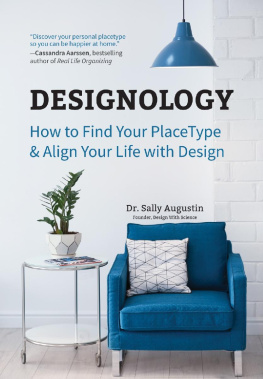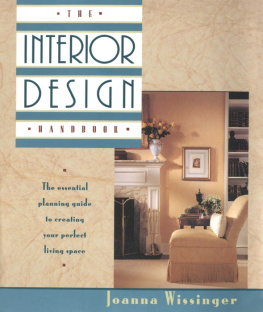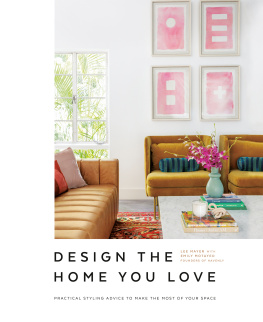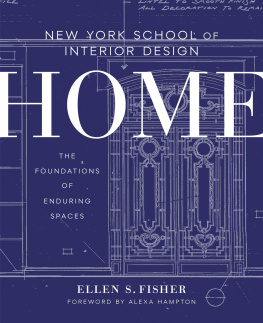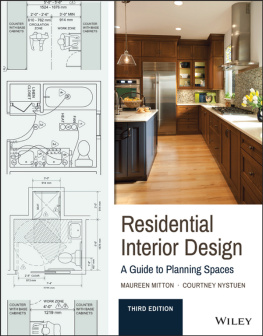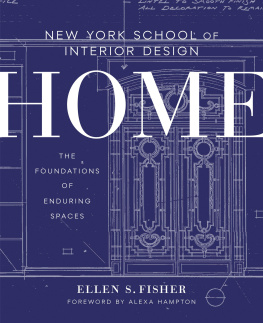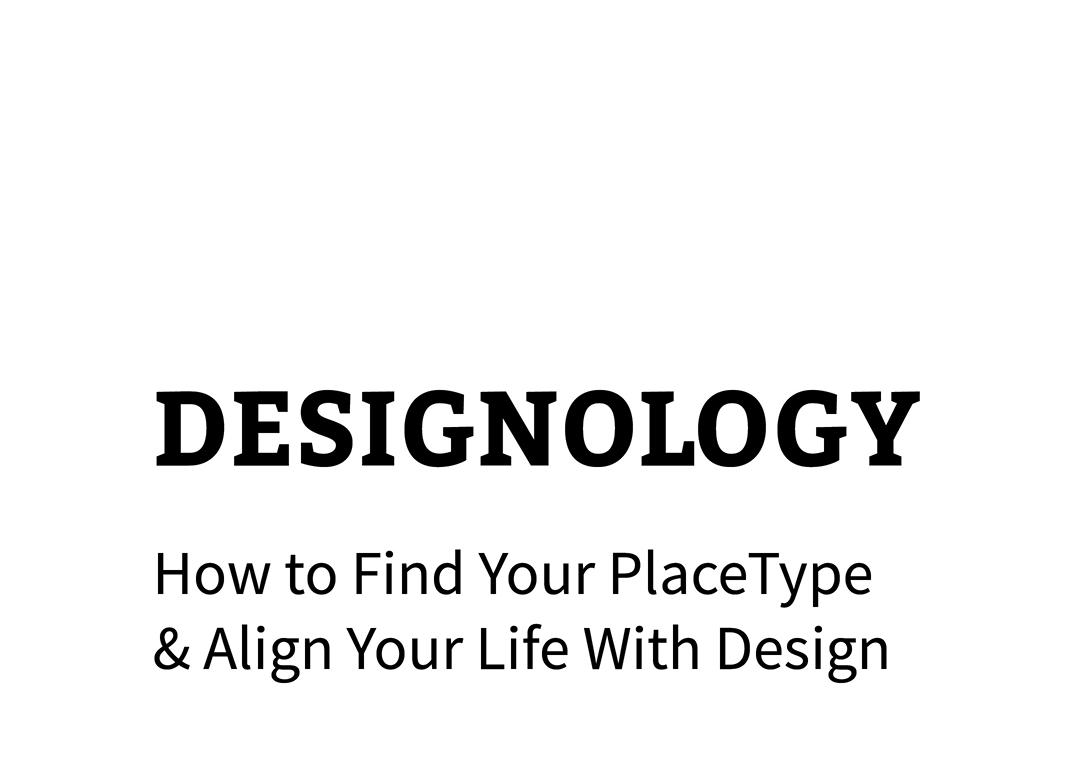
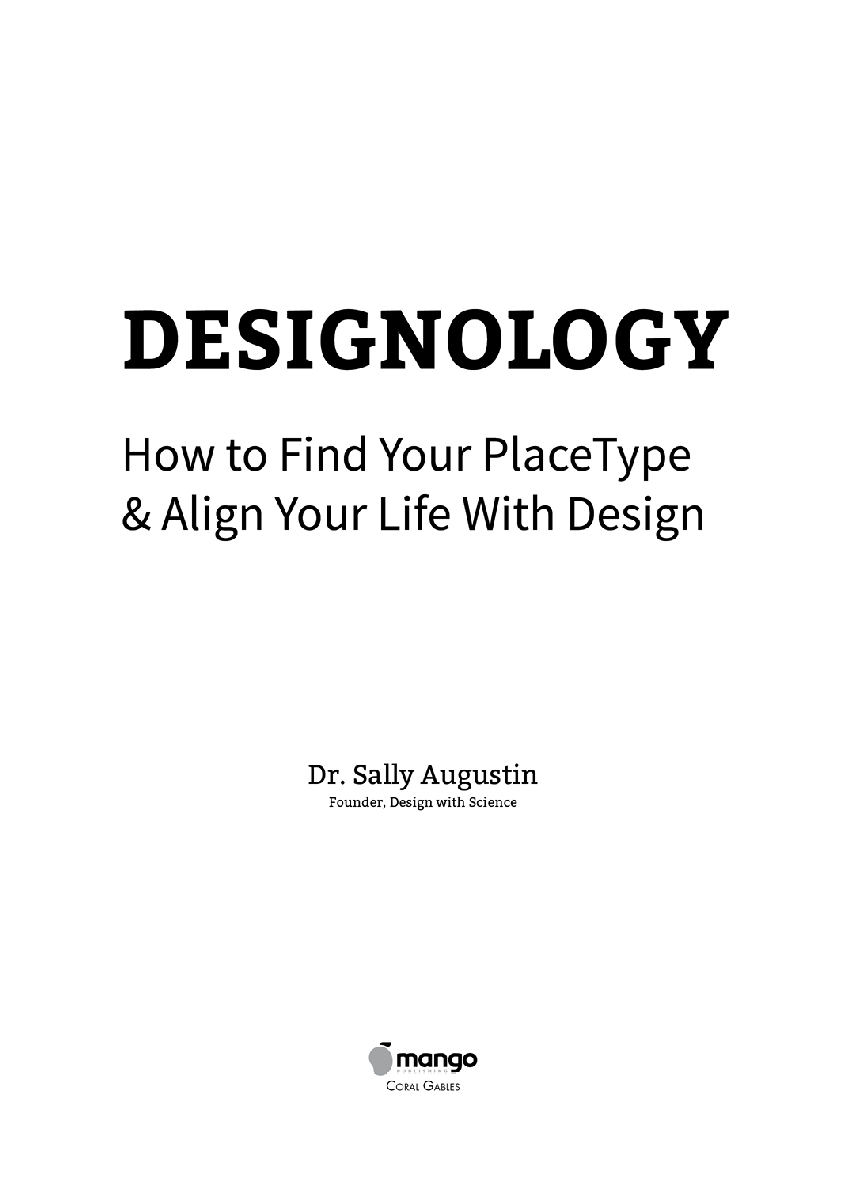
Copyright 2019 Dr. Sally Augustin
Published by Mango Publishing Group, a division of Mango Media Inc.
Cover and Layout Design: Elina Diaz
Mango is an active supporter of authors rights to free speech and artistic expression in their books. The purpose of copyright is to encourage authors to produce exceptional works that enrich our culture and our open society.
Uploading or distributing photos, scans or any content from this book without prior permission is theft of the authors intellectual property. Please honor the authors work as you would your own. Thank you in advance for respecting our authors rights.
For permission requests, please contact the publisher at:
Mango Publishing Group
2850 Douglas Road, 2nd Floor
Coral Gables, FL 33134 USA
For special orders, quantity sales, course adoptions and corporate sales, please email the publisher at or +1.800.509.4887.
Neither the author nor the publisher is engaged in rendering professional advice or services to the individual reader. Neither the author nor the publisher shall be liable or responsible for any loss or damage allegedly arising from any information or suggestion in this book.
This text benefitted from discussions the author had with Tamie Glass at the University of Texas at Austin and Lindsay T. Graham at the Center for the Built Environment, University of California at Berkeley.
Designology: How to Find Your Placetype and Align Your Life with Design
Library of Congress Cataloging
ISBN: (print) 978-1-63353-882-5 (ebook) 978-1-63353-883-2
Library of Congress Control Number: 2018962590
BISAC category code: HOM003000, HOUSE & HOME / Decorating
Printed in the United States of America
This text is dedicated to Denny Beasley (he knows the reasons why) and to Cristina Banks of the University of California, Berkeley, for all her support as this book was being developed.
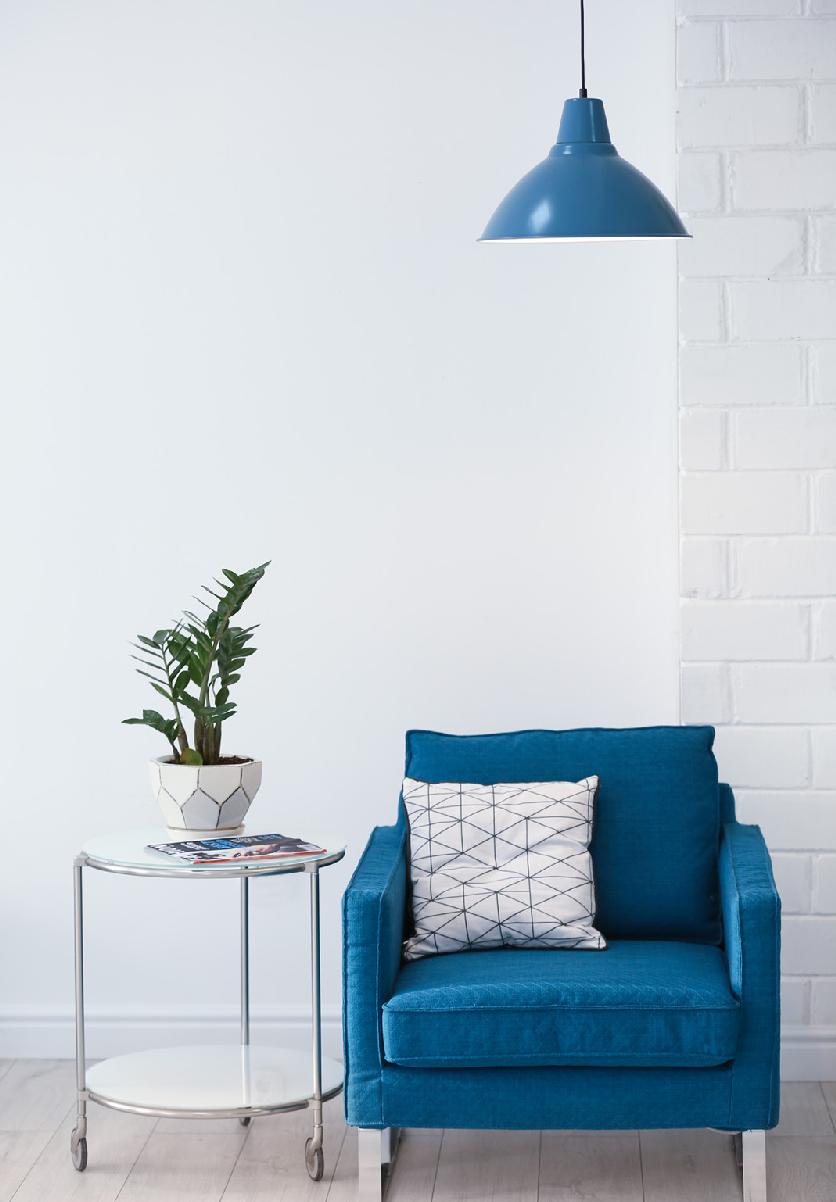
Table of Contents
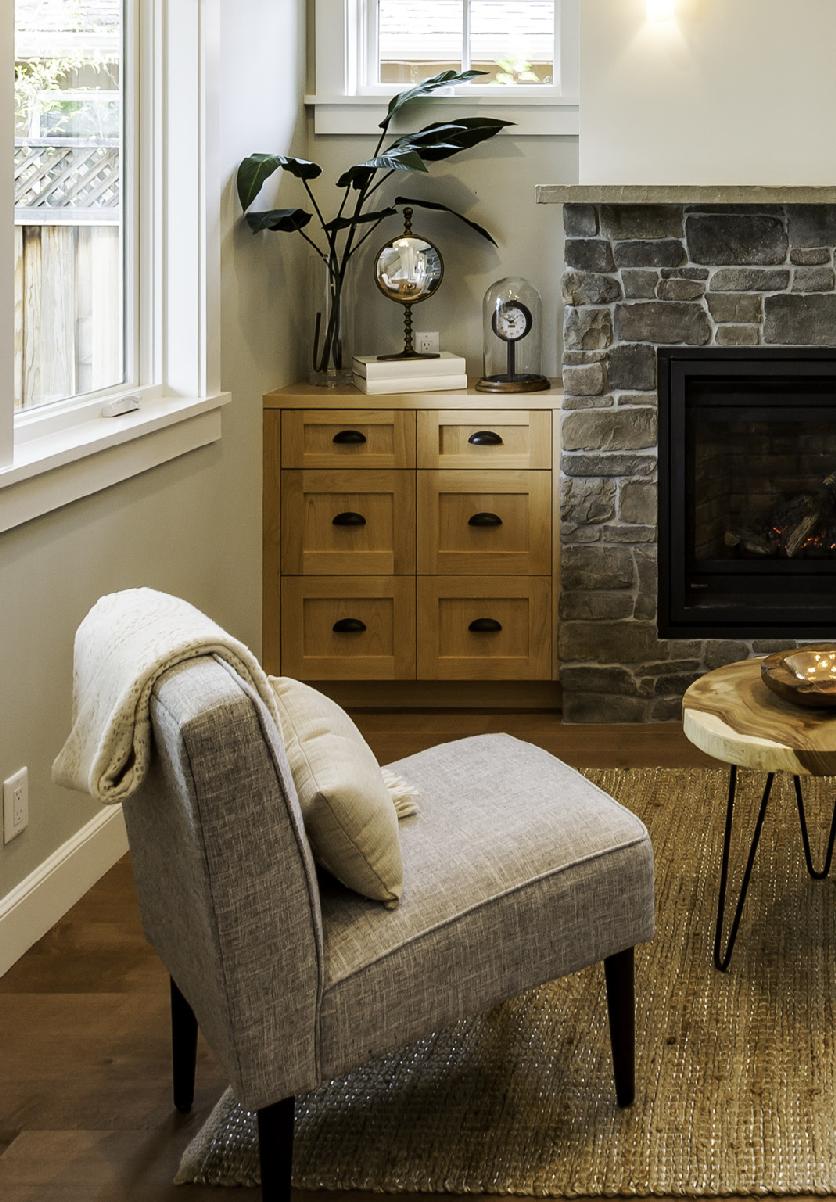
What Kind of Home and Workplace
Are Best for You?
This can be a difficult question to answer.
Designing homes and workspaces is tough. Have you found yourself:
Perplexed before a sea of paint chips at your local home improvem ent store?
Wandering glumly through furnitu re stores?
Endlessly cycling from one real estate showing to the next with an agent who is less and less concerned with finding you a home and more and more interested in getting you to buy something, anything, so the agent can move on to othe r clients?
Decluttered and living in a string of desolate interiors?
Opening your Pinterest account and jus t sighing?
The design-confused phase of your life is ending. You can take control of your physical world. The science-based information in the pages to come will show you how to create spaces where you and your family and friends can live your b est lives.
With science, you can answer question s such as:
What color should you paint your di ning room?
Should you use warm-colored light bulbs or cool ones in yo ur office?
How do shapes and patternson wallpapers, upholstery, or elsewhereinfluence how you think i n a space?
How do room dimensions influence you psychologically? Can you use paint to make your living room feel like its a more comfortable size or shape?
In what ways do sounds affect your mental state? How should you soundscape places where you need to concentrate or think creative thoughts?
Why does smell matter? How can you use scents to relax and feel less anxious? Remember things? Boost your mood?
How do textures influence you emotionally? What should your bedroom rug feel like underfoot?
AND, perhaps the most important questi on of all:
How are your personality and the best design approach for you really related?
You can use science-based design to develop interiors that align with your personality and support your real psychological needsplaces where you feel comfortable, or creative, or whatever else you have planned. The pages that follow are packed with concrete, science-based design insightsin everyday languagethat can be used to help you craft places where you can achieve your l ife goals.
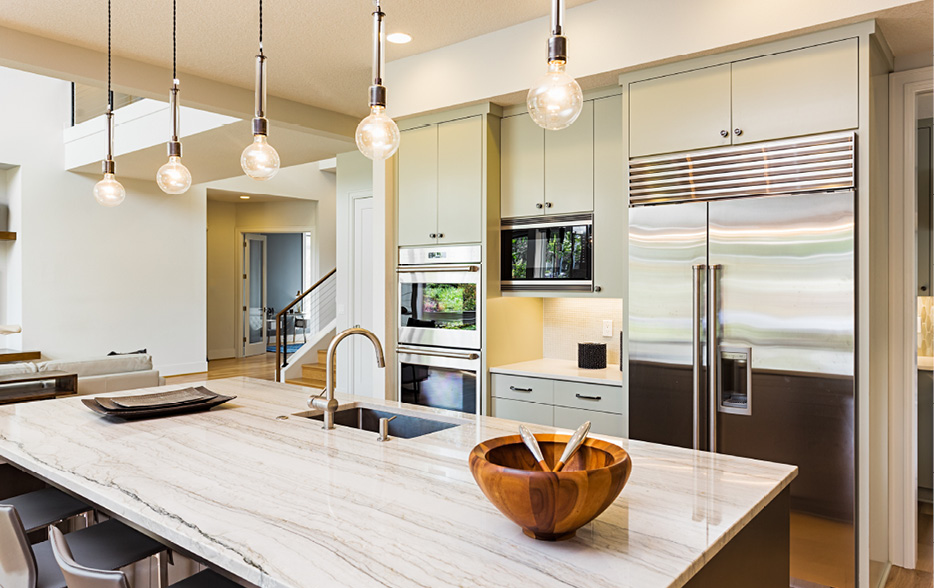
What Is Environmental Psychology?
Place mattersand I didnt know how much it did until my standard of living depended on understanding the links between design, thoughts, and behaviors.
I was a grumpy client at the time of my enlightenment. I had been told by the executives who controlled my professional destiny to use all Id learned in life and at school to develop retail spaces that encouraged sales, aligned with our brandthat basically ensured a prosperous and early-retired future for us all. But the thing was, I had no idea what to do. I didnt know which of the options that eager design teams were presenting I should OK.
So, I bluffed. Sometimes this worked much more successfully than other timesand sometimes not at all. These sometimes-not-at-all situations had the potential to have a negative effect on my earning power, so I resolved to cut out any design-related guesswork.
In my undergraduate days, Id been exposed to enough science to think that there might be some sort of rigorously derived knowledge that could and should guide my decision-making. True to the training Id received as a daughter of a librarian, I hunted for just such information until I found the science of environmental p sychology.
Then I relaxed.
Environmental psychologists had investigated many of the issues that I needed to resolve, and applying their research findings made me look like a genius.
I was no longer a grum py client.
To bolster my knowledge, I went back to school to study environmental psychology in a thorough, organized way. I now have lots of experience applying the science of environmental psychology in everyday settings.
My work as an environmental psychologist now takes me around the world, applying the science of environmental psychology and conducting studies myself. I use research-based insights to help organizations develop workplaces that boost professional performance and healthcare facilities whose aesthetics promote swifter healing. Retailers hire me to help create spaces that encourage sales, and academic organizations bring me in to inform the design of spaces where students learn best. Realtors have employed me to teach them how to stage homes that sell quickly for excellent prices. I work with individual homeowners to evolve current spaces or develop new ones, applying at their houses the same scientific principles that make such a difference in commercial, health care, academic, sales, and other env ironments.
You might call me a desi gn shrink.
Environmental psychology is based in rigorous scientific research, not hunches. All the material in this book is drawn from carefully conducted studies, sometimes in laboratories, sometimes outside them. The way the research well cover was done means you can be confident using it to make design decisions.
Next page
